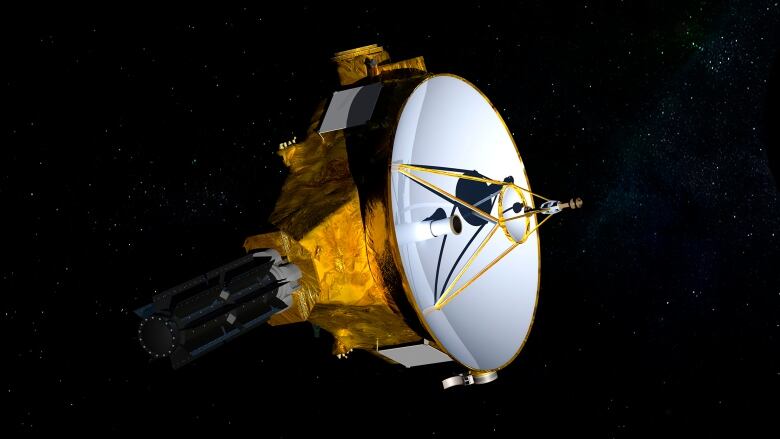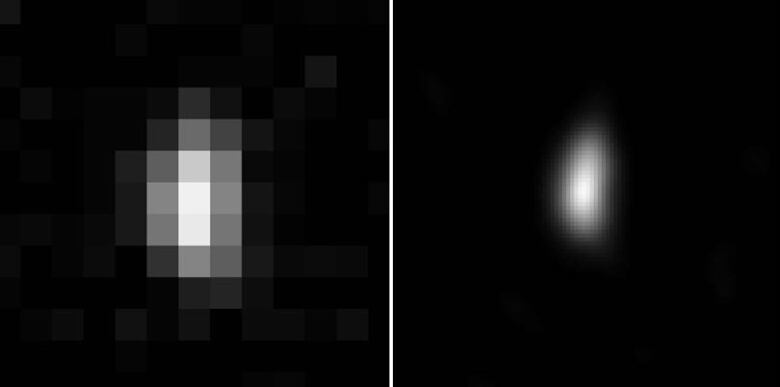Cheers erupt as NASA's New Horizons flies by the most distant object ever: 1.6 billion km past Pluto
Tiny, icy celestial object Ultima Thule is 6.5 billion km from Earth

Scientists say NASA spacecraft New Horizonshas survived humanity'smost distant exploration of another world.
New Horizons made a successful flyby of the tiny, icy celestial object known asUltimaThule, 6.5billion kilometres from Earth, at 12:33 a.m. ET Tuesday, but confirmation only came 10 hours later, given the vast distance.
RIGHT NOW, ~1 billion miles past Pluto, @NASANewHorizons is performing the most distant spacecraft flyby ever as it zooms past #UltimaThule, an icy, ancient rock in the Kuiper Belt. Watch live coverage: https://t.co/oJKHgKpQjH pic.twitter.com/U30yazzigo
—@NASACheers erupted at Johns Hopkins University's Applied Physics Laboratory in Laurel, Md., home to mission control, when flight controllers received word from the spacecraft late Tuesday morning.
"We have a healthy spacecraft. We've just accomplished the most distant flyby," said Alice Bowman, mission operations manager.
An anxious spill-over crowd in a nearby auditorium joined in the loud celebration, cheeringeach green, or good, status update. When the spacecraft was finally declared healthy and the flyby successful, scientists and other team members embraced, while hundreds of others gave a standing ovation.
"It's a great day. Happy New Year," said Mark Holdridge, a mission manager from Johns Hopkins.
Watch:'Go NASA. Go New Horizons': Cheers erupt after successful flyby
The flyby comes 3 years after New Horizons swung past Pluto and yielded the first close-ups of the dwarf planet.
Scientists said it will take nearly two years for New Horizons to beam back all its observations of Ultima Thule, a full 1.6 billion kilometres beyond Pluto. At that distance, it takes six hours for the radio signals to reach Earth.
Record-setting journey for spacecraft
Scientists did not want to interrupt observations as New Horizons swept past Ultima Thule described as a bullet intersecting with another bullet so they delayed radio transmissions. The spacecraft is believed to have come within 3,500 kilometres of Ultima Thule.
"We set a record. Never before has a spacecraft explored anything so far away," said the project's lead scientist who led the countdown to the close encounter, Alan Stern of Southwest Research Institute. "Think of it. We're a billion miles farther than Pluto."
Stern called it an auspicious beginning to 2019, which will mark the 50th anniversary of Neil Armstrong and Buzz Aldrin's footsteps on the moon in July 1969.

"Ultima Thule is 17,000 times as far away as the 'giant leap' of Apollo's lunar missions," Stern noted in an opinion piece in the New York Times.
The 2015 encounter New Horizons had with Pluto was the most distant exploration until Tuesday. The Ultima Thule rendezvous was more complicated, given the distance from Earth, the much closer gap between the spacecraft and its targetand all the unknowns surrounding Ultima Thule.
Rock 'n' roll icon on hand
Queen guitarist Brian May, who also happens to be an astrophysicist, joined the team at Johns Hopkins for a midnight premiere of the song he wrote for the big event.
"We will never forget this moment," said May, who led the new yearcountdown. "This is completely unknown territory."

Ultima Thule was unknown until 2014, eight years after New Horizons departed Earth. It was discovered by the Hubble Space Telescope and added to New Horizons' itinerary.
Deep inside the so-called Kuiper Belt, a frigid expanse beyond Neptune that is also known as the Twilight Zone, Ultima Thule is believed to date back 4.5 billion years to the formation of our solar system. As such, it is "probably the best time capsule we've ever had for understanding the birth of our solar system and the planets in it," Stern said.
In classic and medieval literature, Thule was the most distant, northernmost place beyond the known world.

Scientists suspect Ultima Thule is a single object no more than 32 kilometres long, though there's a chance it could prove to be two smaller bodies orbiting each other or connected by a slender neck. It is thought to be potato-shaped and dark-colouredwith a touch of red, possibly from being zapped by cosmic rays for eons.
The exact shape and composition won't be known until New Horizonsstarts sending back data in a process expected to last almost two years.
"Who knows what we might find?Anything's possible out there in this very unknown region," said John Spencer, a deputy project scientist from Southwest Research Institute. "We'll find out soon enough."













_(720p).jpg)


 OFFICIAL HD MUSIC VIDEO.jpg)
.jpg)



























































































